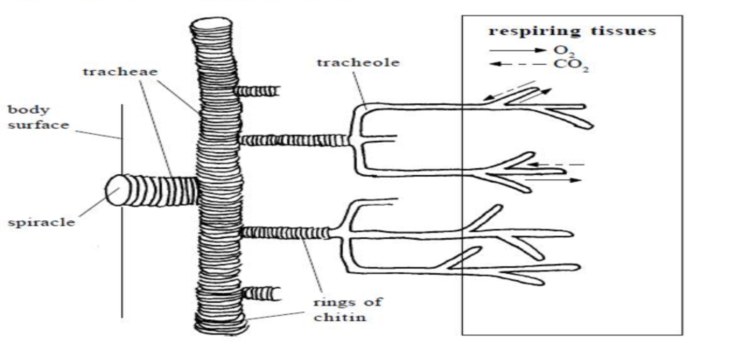Adaptation for Gas Exchange
- Created by: Ellen122
- Created on: 02-02-21 19:15
Adaptations for Gas Exchange
All organisms need to exchange gas with their environment, whether that be in water or air, the oxygen requirement is determined by their volume. In order for respiratory surfaces to achieve a high rate of diffusion they share the following common features:
- They must have a large surafce area relative to that of the volume of the organism
- The diffusion distance must be short meaning it must be thin
- They are permeable
- The surface must be moist to dissolve the gases before diffusion
- They are ventilated to maintain a concentration gradient
For singe celled organism they have a large surface area:volume ratio as they use the cell membrane as a respiratory surface, an example of this is an amoeba.
However, for multicellular organisms, which are much larger, the surface are: volume ration is decreased. Flatworms have evolved to become flattened in order to increase their surface area:volume ratio, which also provides a short diffusion distance to all parts of the body. Earthworms are cylindrically shapped which too increases the surface area:volume ratio as well as having moist skin, though this does make them prone to dessication. They possess a closed circulatory system with a pigment for the transport of oxygen to all body parts. For multicellular organisms which are larger require a specialised exchange surface which provide them with sufficent oxygen for their higher metabolic rate.
Gas Exchange in Insects
Insects have evolved to have a unique method of gas exchange, compare to that of other land animals. Their segments contain paired holes called spiracles that run either side of the body. The spiracles are openings to a series of branched chitin lined tubes called trachae, these will divide further into tracheoles. It is here where gas exchange occurs taking placing directly without the involvement of a 'blood'. Diffusion is very rapid as it takes place in air and does not need to be dissolved in liquid.
Gas Exchange in Water
Most aquatic and marine organisms use gills to exchange gases. Water is a dense medium and cotains less oxygen, compared to that of the air. The gills are folded to increase the surface area. The dense water prevents the gills from collapsing on top of eachother, which would reduce the surface area.
Cartilaginous Fish
Sharks and rays have 5 gill slits on either side of their heads. The water is forced into the mouth and then forced past the gills out of the slits once the floor of the mouth is raised. The water passes the gill capillaries in the same way as the blood flow, this is known as parallel flow. This method is inefficient as only 50% of oxygen in the water will diffuse into the blood, before it reaches equilibrium.

Bony Fish
Bony fish only have 4 pairs of gills in their pharynx. Each of the gills is supported by a gill arch, which has many plates called…

Comments
No comments have yet been made